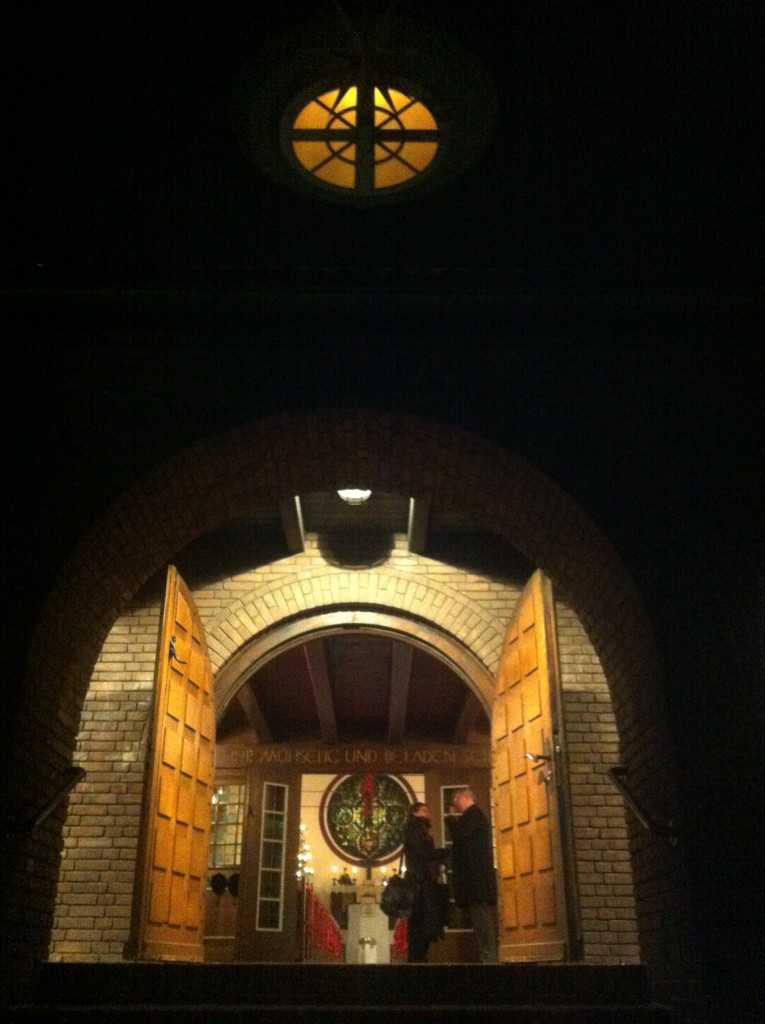
Using the period of a swinging lamp to calculate the height of the ceiling
Using the period of a swinging lamp to calculate the height of the ceiling.
When, on December 31st of last year, I was sitting in church on the gallery, listening to a friend of mine play music, I had a lamp right in front of my nose that swung ever so lightly because of warm air raising from a vent below. I’ve actually written about the same observation a year ago when I sat in pretty much the exact same spot, listening to the same friend play, but since you liked my recent post on a different church (actually built by the same team of architects!) I thought we’d go back to churches again today.
This is what the church looks like on the outside when it’s dark:
And here is the inside.
The picture above was taken from a more or less central position on the gallery when we walked in. I ended up sitting a lot further to the left (as you can see in the video below).
Now. For small displacements from the equilibrium position, we can use the period of the lamp’s movements to calculate the height of the ceiling, since the period of a swing only depends on the acceleration due to gravity and the length of the cable.
Btw, in old pendulum clocks, the pendulum is often shaped as a disk. I always implicitly assumed that was to make sure it didn’t break the glass closing off the case in which the pendulum swings or to have a better surface to decorate, but according to Wikipedia it is to reduce air resistance. Which makes a lot more sense, obviously. Why I thought the pendulum might start swinging perpendicularly to its original path beats me. But then you never really think about why you assume stuff, do you?
Anyway. Since in this year’s video the lamp’s movement is a lot easier to spot than in last year’s, and it is therefore much easier to actually measure the period, here we go:
Taking the time for six swings, I measure something like 27 seconds, which would mean 4.5 seconds per swing.
Using T = 2π sqrt(L/g) with T the period and L the length of the cable, it follows that the cable is something like 5 meters long. Which seems realistic when you look at the size of the people in the benches. Now I should really go back to last year’s video and do the comparison, or at least take the time from this video a second time, to estimate the error. But I can’t take all the fun away from you, so please go ahead and let me know what you find! :-)

